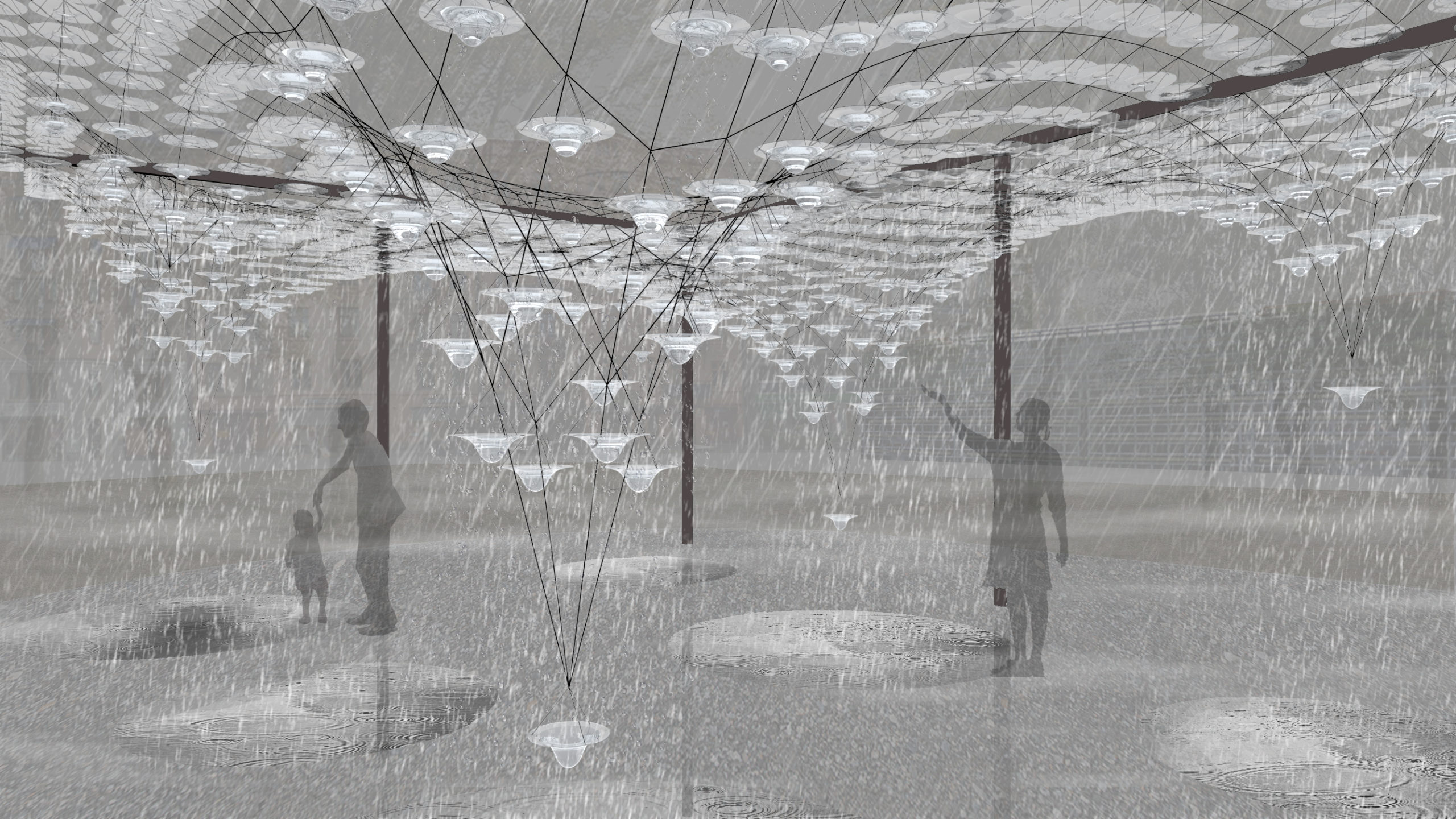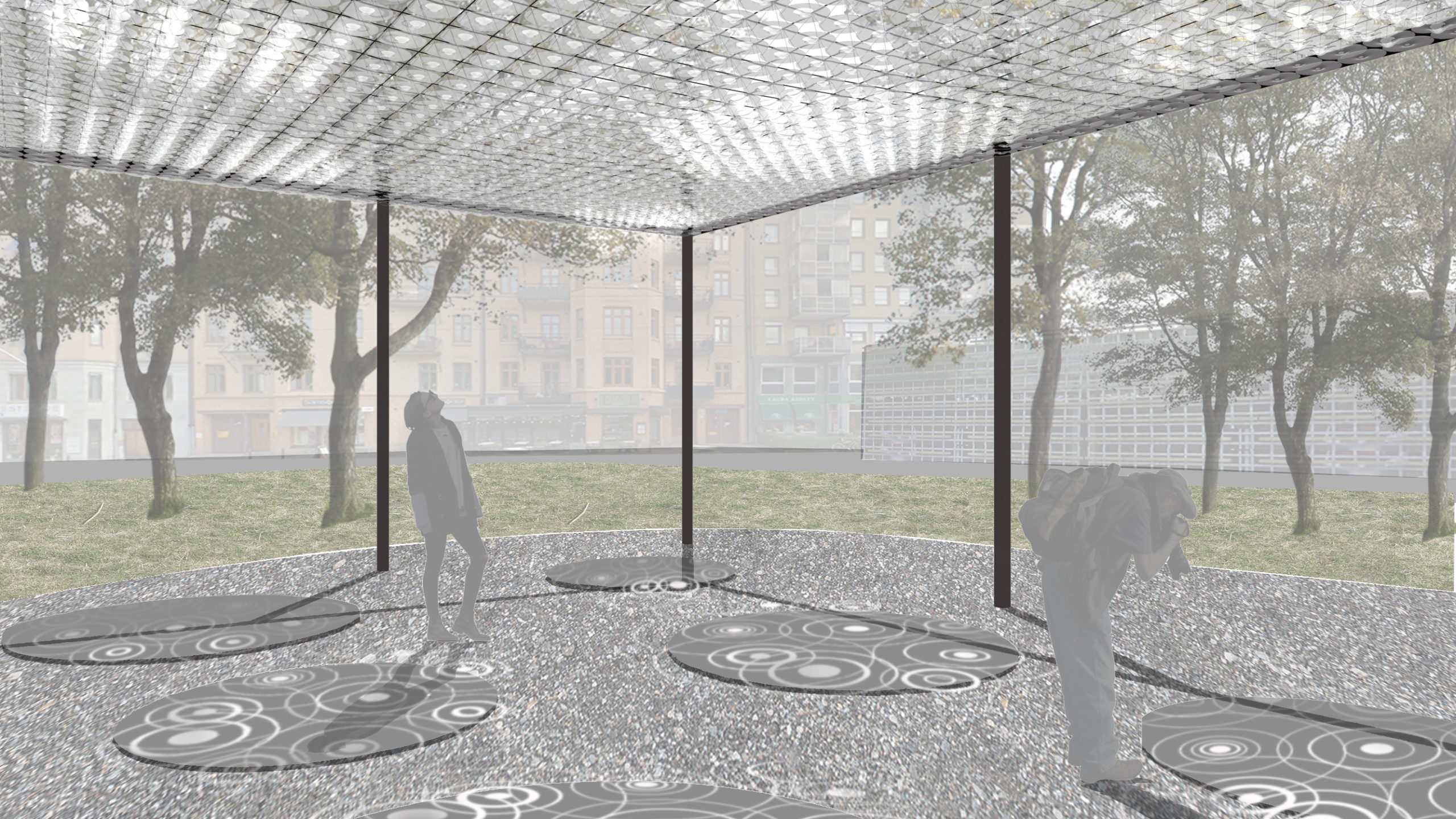
CONTEXT
The context for my thesis is the city of Gothenburg. The city is located on one of the rainiest areas in Sweden. It rains almost every third day here. To find the most suitable locations for the pavilions I started to research where in Gothenburg rain can be most prominent. The results are a few places appointed by the municipality and some locations where the rainfall has great presence.
The locations chosen for this proposal are Skeppsbron, Kungsparken and Lorensbergsparken. The different characteristics of the sites reflects back on the three rain scenarios from the rain walks in the city. The pavilions introduce three different ways the structure can be adapted to context. They are located in a city context to make them more accessible. The pavilions are also in walking distance from each other allowing a relation between them.

SKEPPSBRON
The site chosen for the exposed pavilion is located in Skeppsbron, a pier along the Göta river. The area is very open and exposed. There is a walking path here today, close to the water edge, that goes from the city centre down. The exposed pavilion is located on this path. Since there is not a lot of other places to walk on here the movement is linear resulting in a 35meter long pavilion.

The pavilion creates a semi shelter where the visitors can walk under and still feel the rain and the strong winds. During rainfall the droplets guide the rain to the anchor points where it will pour down. This encloses the space underneath and creates a changing tunnel to walk through. The strong winds here will blow the falling rain away making it almost feel like you are walking through water instead of under it. This embodies the phenomenon and highlights the experience even more.



KUNGSPARKEN
The location for the enclosed pavilion is Kungsparken. Kungsparken is a central green belt in the middle of Gothenburg. The park is covered in big trees and vegetation which is a suitable location for the enclosed pavilion. The pavilion is placed in the middle of the park surrounded by large trees. Active walkways go around the pavilion making it easier to access.

To embody the site and the qualities it provides the flexible netting structure is in tension between the trees. Instead of beams to carry the load, the pavilion will have steel wire rope that the net is weaved on. The structure is then supported by the tree trunks four meter up. The anchor points are more randomly places here to give a dynamic spatiality. The wider shape encourages visitors to stay and move around under the droplets and trees instead of walking by. The pavilion rises and falls with precipitation differently each time it rains. As the rain falls the structure gets heavier and drop down in the anchor points, and when it is warm the water evaporates and the net rises back into its original form.



LORENSBERGSPARKEN
The site chosen for the urban pavilion is Lorensbergsparken, which is a small park in the middle of the inner city of Gothenburg.The park is surrounded by buildings making it almost a backyard, although the location is central. With this urban pavilion I hope to activate the place.The pavilion is located in the middle of the park in a “pocket” along the walkway. I wanted to encourage people to stop on their way and enjoy the pavilion instead of walking through.

The rectangular shape of the pavilion embodies the site, encouraging people passing by to stop and enjoy the rain. During rainfall the droplets get heavier and the anchor points drops down, enclosing the space underneath. The droplets guide the rain and concentrates it around the anchor points. This creates different rain scenarios underneath the net. The visitors have the option to enjoy the rain from a sheltered space or experience the full effect of the rainfall.



